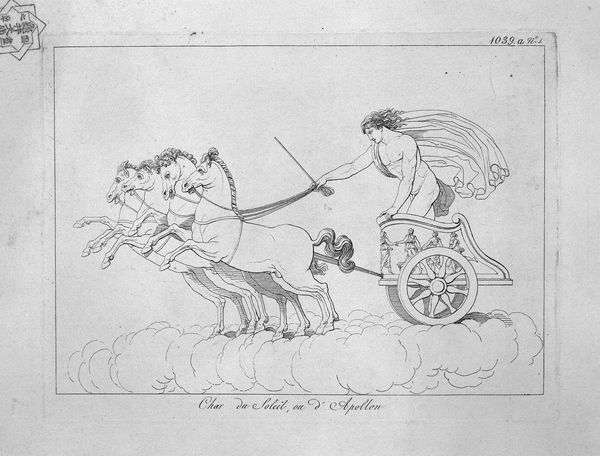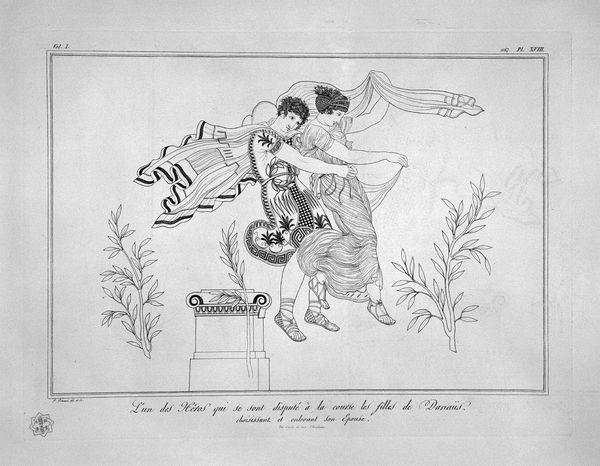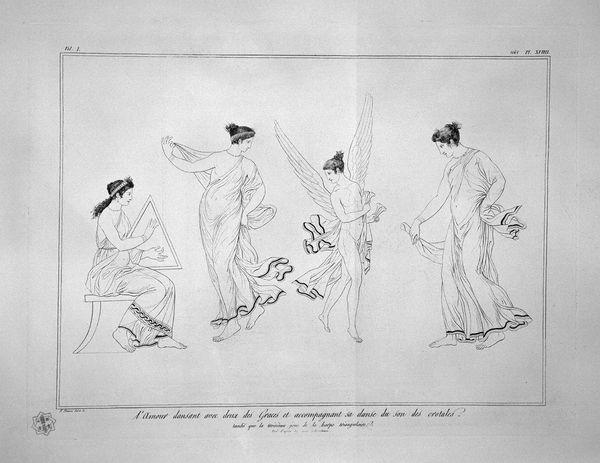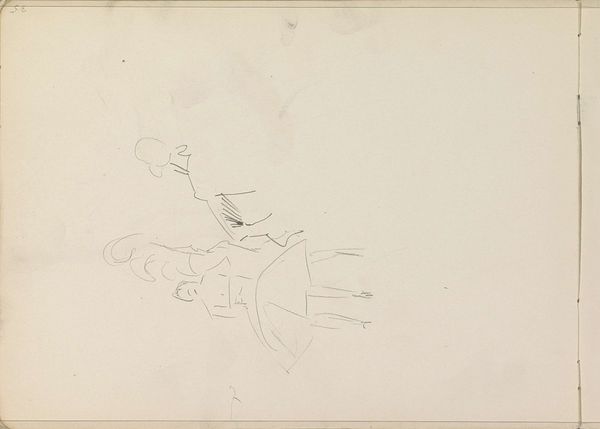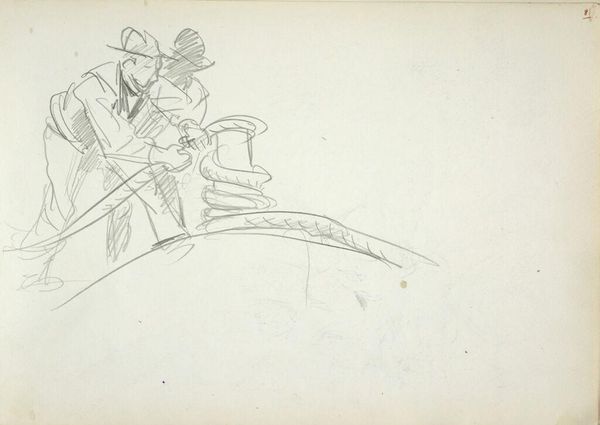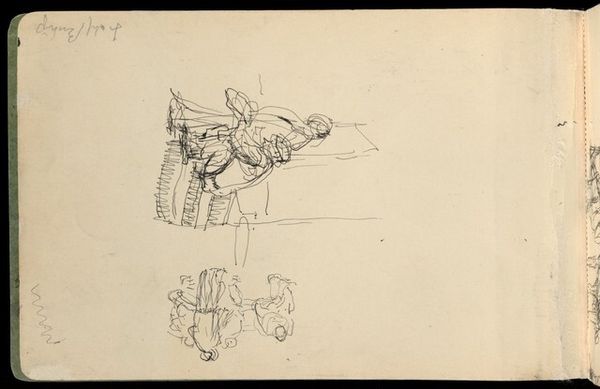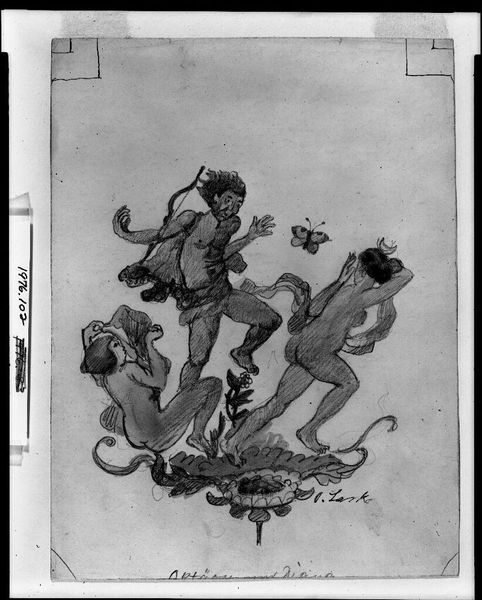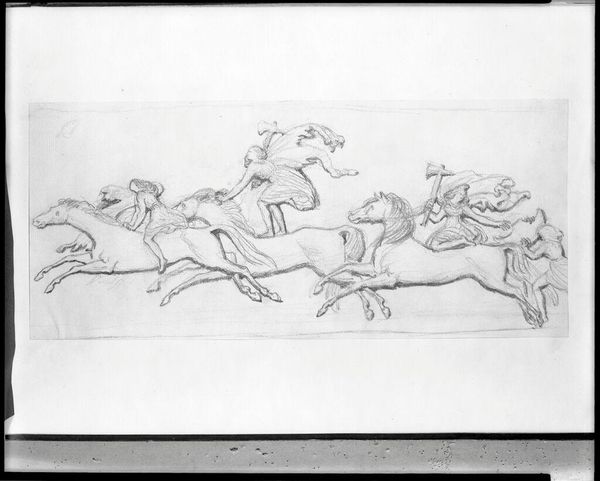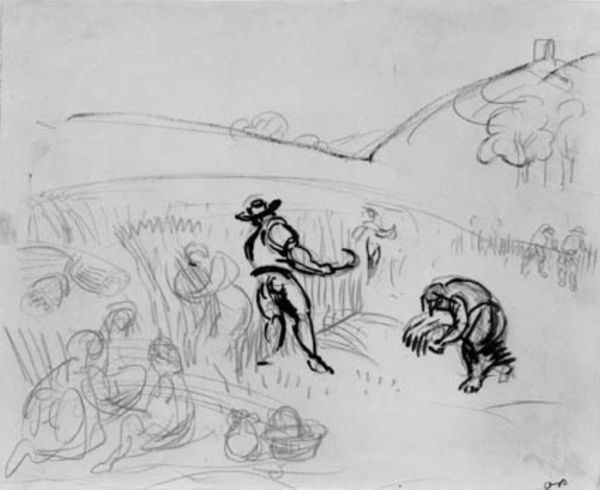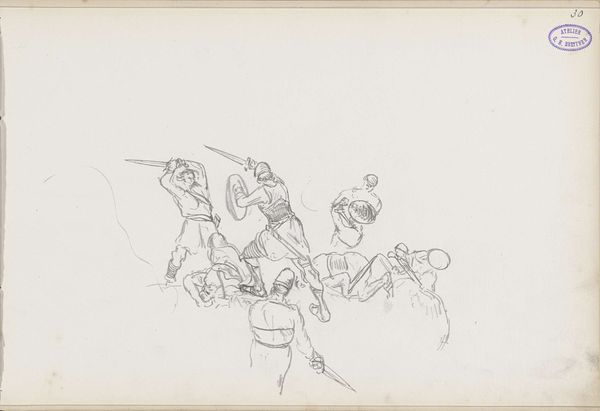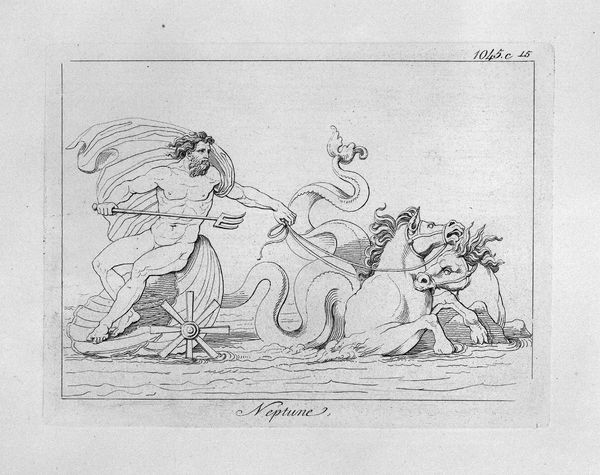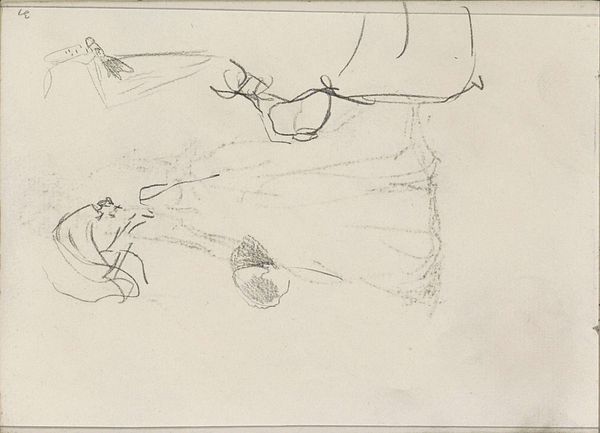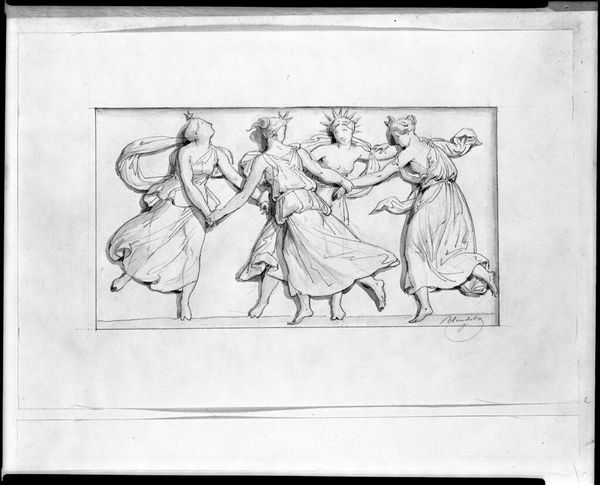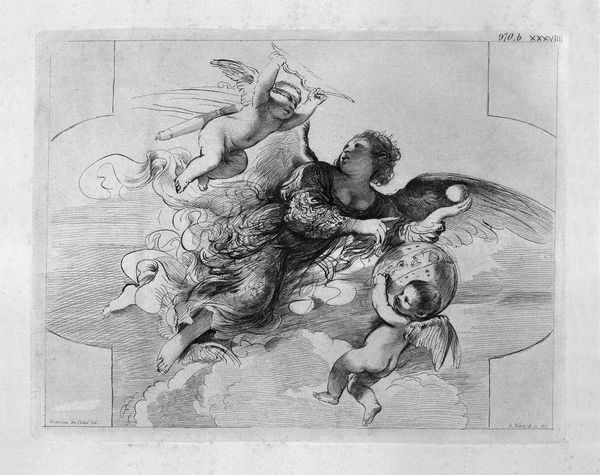
Auriga winner of the daughters of Danaus (painting by vessel, inc. To outline)
0:00
0:00
engraving
#
neoclacissism
#
greek-and-roman-art
#
classical-realism
#
figuration
#
line
#
history-painting
#
engraving
Copyright: Public domain
Curator: What strikes me first is how this scene, although meticulously rendered, feels almost…theatrical. Editor: It's an engraving, probably from a book illustration, by Giovanni Battista Piranesi. It shows a chariot race, specifically depicting the victory of one of the heroes competing for the daughters of Danaus. Curator: Ah, the Danaids! That immediately infuses the image with layers of symbolic weight. These women, punished in the underworld, forever filling leaking jars, represent futility. Here, a hero wins their hand—a triumph over that futility? Editor: Perhaps. Piranesi lived in a time when the rediscovery of classical antiquity shaped political thought. This engraving presents an idealized vision of Roman strength and virtue through linear design and attention to costumes. What are you looking at more closely, if you don’t mind me asking? Curator: The horses! Each one is a study in controlled power. The repeated motif creates a rhythm that mimics the movement itself. The contrast with the poised stillness of the women in the chariot is quite interesting. There's something stoic and resolute in their posture. Editor: I see it a bit differently. I'm struck by how static they seem despite being in the chariot, as though frozen in time, archetypes more than individuals. This links to the political purpose. The power of Rome isn't presented by single heroes or heroines, but through generalized displays of virtues such as order, duty, even decorativeness. I believe this might tie to the cultural obsession of his time with line and perfect human specimens. Curator: True, the overall effect suggests not raw emotion but an exercise in ideals. But the legend gives this additional layer: we, who understand it, are positioned to recognize the story, like being party of some mystery and conspiracy. Editor: And in Piranesi's time, it was almost like staging a political spectacle through art. This image participates in a broader discourse about empire and power during the height of European colonialism. Curator: An image laden with complex connections and coded information! I find it both unsettling and intriguing, knowing what stories can carry within. Editor: Indeed. It's a lens through which to view how the past has always been remodeled, reimagined, and employed. A vehicle to transport culture forward in time.
Comments
No comments
Be the first to comment and join the conversation on the ultimate creative platform.
